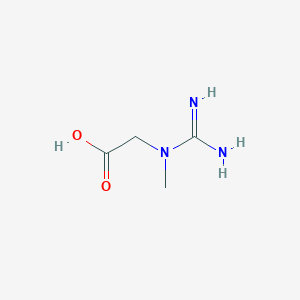
-
肌酸
NMR and HPLC COA下载 MSDS下载 - Names:
Creatine
- CAS号:
57-00-1
MDL Number: MFCD00004282 - MF(分子式): C4H9N3O2 MW(分子量): 131.13
- EINECS:200-306-6 Reaxys Number:
- Pubchem ID:24857517 Brand:BIOFOUNT
| 货品编码 | 规格 | 纯度 | 价格 (¥) | 现价(¥) | 特价(¥) | 库存描述 | 数量 | 总计 (¥) |
|---|---|---|---|---|---|---|---|---|
| SY0161-500g | 500g | 无水 98% | ¥ 366.67 | ¥ 366.67 | 273 | Instock,1days | ¥ 0.00 | |
| SY0161-25g | 25g | 无水 98% | ¥ 76.00 | ¥ 76.00 | 54 | Instock 1days | ¥ 0.00 | |
| SY0161-100g | 100g | 无水 98% | ¥ 122.67 | ¥ 122.67 | 89 | Instock,1days | ¥ 0.00 |
| 中文别名 | 肌酸(57-00-1),无水肌酸,N-(氨基亚氨基甲基)-N-甲基甘氨酸, 肌肉素, 肌酸(无水), N-胺肉胺酸, Α-甲胍乙酸 |
| 英文别名 | Creatine(57-00-1);creatine; Creatin; Kreatin; N-amidinosarcosine; Krebiozon; 2-(1-Methylguanidino)acetic acid; N-methyl-N-guanylglycine; methylglycocyamine; Creatine anhydrous |
| CAS号 | 57-00-1 |
| Inchi | InChI=1S/C4H9N3O2/c1-7(4(5)6)2-3(8)9/h2H2,1H3,(H3,5,6)(H,8,9) |
| InchiKey | CVSVTCORWBXHQV-UHFFFAOYSA-N |
| 分子式 Formula | C4H9N3O2 |
| 分子量 Molecular Weight | 131.13 |
| 溶解度Solubility | No data available |
| 性状 | Solid |
| 储藏条件 Storage conditions | Store at 4°C,-4℃下存储更优 |
动物实验:慢性暴露或致癌性/大鼠补充慢性肌酸可下调肌酸转运蛋白的表达,导致在任何给定时间进入细胞的数量减少。
无水肌酸(MSDS,57-00-1)(57-00-1)实验注意事项:
1.实验前需戴好防护眼镜,穿戴防护服和口罩,佩戴手套,避免与皮肤接触。
2.实验过程中如遇到有毒或者刺激性物质及有害物质产生,必要时实验操作需要手套箱内完成以免对实验人员造成伤害。
3.取样品的移液枪头需及时更换,必要时为避免交叉污染尽可能选择滤芯吸头。
4.称量药品时选用称量纸,并无风处取药和称量以免扬撒,试剂的容器使用前务必确保干净,并消毒。
5.取药品时尽量采用多个药勺分别使用,使用后清洗干净后,烘干消毒存放。
6.实验后产生的废弃物需分类存储,并交于专业生物废气物处理公司处理,以免造成环境污染。
Experimental considerations:
1. Wear protective glasses, protective clothing and masks, gloves, and avoid contact with the skin during the experiment.
2. The waste generated after the experiment needs to be stored separately, and handed over to a professional biological waste gas treatment company to avoid environmental pollution.
Tag:肌酸蒸汽压,肌酸合成,肌酸标准,肌酸应用,肌酸合成,肌酸沸点,肌酸闪点,肌酸用途,肌酸溶解度,肌酸价格,肌酸作用,肌酸结构式,肌酸用处
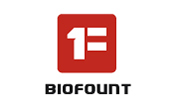
| 产品说明 | 肌酸(57-00-1)是脊椎动物产生的内源性氨基酸衍生物,肌酸主要存在于肌肉细胞中.肌酸溶解度,肌酸结构式,肌酸MSDS详见主页 |
| Introduction | Creatine(肌酸,57-00-1) is an endogenous amino acid derivative produced by vertebrate animals and occurring primarily in muscle cells. |
| Application1 | 肌酸以固体,微溶(在水中)和弱酸性化合物(基于其pKa)存在。 |
| Application2 | 生化研究,保健品等 |
| Application3 | 肌酸已发现在大多数人体组织中,并且在包括汗液,血液,唾液和母乳在内的大多数生物流体中也被发现 |
1.肌酸,称为α氨基酸及其衍生物的有机化合物。这些是其中氨基连接至紧邻羧酸酯基的碳原子(α碳)的氨基酸或其衍生物。肌酸是一种用于营养补充的药物,也可用于治疗饮食不足或失衡。肌酸以固体,微溶(在水中)和弱酸性化合物(基于其pKa)存在。肌酸已发现在大多数人体组织中,并且在包括汗液,血液,唾液和母乳在内的大多数生物流体中也被发现。在细胞内,肌酸主要位于细胞质,线粒体和髓鞘中。肌酸参与许多酶促反应。特别是,S-腺苷甲硫氨酸和肌酸可以由胍基乙酸和S-腺苷同型半胱氨酸生物合成。它被胍基乙酸酯N-甲基转移酶催化。另外,可以通过胍基乙酸酯N-甲基转移酶的作用由S-腺苷甲硫氨酸和胍乙酸生物合成S-腺苷同型半胱氨酸和肌酸。在人类中,肌酸参与甘氨酸和丝氨酸的代谢途径以及精氨酸和脯氨酸的代谢途径。肌酸也与几种代谢紊乱有关,其中包括NON酮症高血糖症途径,肌酸缺乏症,胍基乙酸甲酯甲基转移酶缺乏症,L-精氨酸:甘氨酸a基转移酶缺乏症和I型高蛋白血症途径。肌酸是一种潜在的有毒化合物。已发现肌酸与几种疾病有关,称为横纹肌溶解,肝硬化,脑肌酸缺乏综合征3和精神分裂症。肌酸还与包括高蛋氨酸血症在内的先天性代谢疾病有关。
2.Creatine(肌酸,57-00-1) , also known as cosmocair C 100 or krebiozon, belongs to the class of organic compounds known as alpha amino acids and derivatives. These are amino acids in which the amino group is attached to the carbon atom immediately adjacent to the carboxylate group (alpha carbon), or a derivative thereof. Creatine is a drug which is used for nutritional supplementation, also for treating dietary shortage or imbalance. Creatine exists as a solid, slightly soluble (in water), and a weakly acidic compound (based on its pKa). Creatine has been found throughout most human tissues, and has also been detected in most biofluids, including sweat, blood, saliva, and breast milk. Within the cell, creatine is primarily located in the cytoplasm, mitochondria and myelin sheath. Creatine participates in a number of enzymatic reactions. In particular, S-Adenosylmethionine and creatine can be biosynthesized from guanidoacetic acid and S-adenosylhomocysteine; which is catalyzed by the enzyme guanidinoacetate N-methyltransferase. In addition, S-Adenosylhomocysteine and creatine can be biosynthesized from S-adenosylmethionine and guanidoacetic acid through the action of the enzyme guanidinoacetate N-methyltransferase. In humans, creatine is involved in the glycine and serine metabolism pathway and the arginine and proline metabolism pathway. Creatine is also involved in several metabolic disorders, some of which include the NON ketotic hyperglycinemia pathway, creatine deficiency, guanidinoacetate methyltransferase deficiency, L-arginine:glycine amidinotransferase deficiency, and the hyperprolinemia type I pathway. Creatine is a potentially toxic compound. Creatine has been found to be associated with several diseases known as rhabdomyolysis, cirrhosis, cerebral creatine deficiency syndrome 3, and schizophrenia; creatine has also been linked to the inborn metabolic disorders including hypermethioninemia.
| 警示图 | |
| 危险性 | warning |
| 危险性警示 | No data available |
| 安全声明 | H315,H319,H335 |
| 安全防护 | P261,P305+P351+P338 |
| 备注 | 实验过程中防止吸入、食入,做好安全防护 |
| Comparative analysis of laboratory indexes of severe and non-severe patients infected with COVID-19 Clinica chimica acta; international journal of clinical chemistry 2020-10-01 32511971 |
| Lactate dehydrogenase and C-reactive protein as predictors of respiratory failure in CoVID-19 patients Clinica chimica acta; international journal of clinical chemistry 2020-10-01 32531257 |
| COVID-19 Epidemic: Clinical Characteristics of Patients in Pediatric Isolation Ward Clinical pediatrics 2020-10-01 32646234 |
| Biomarkers and outcomes of COVID-19 hospitalisations: systematic review and meta-analysis BMJ evidence-based medicine 2020-09-15 32934000 |
| Neuromuscular presentations in patients with COVID-19 Neurological sciences : official journal of the Italian Neurological Society and of the Italian Society of Clinical Neurophysiology 2020-09-15 329 |
Abstract:Exhaustive exercise induces various disturbances of homeostasis, with impaired bioenergetics often associated with strenuous muscular work. However, no study so far validated serum biomarkers of creatine metabolism vs. traditional markers of exhaustive exercise and fatigue. Here, we investigated how well changes in serum guanidinoacetic acid (GAA), creatine and creatinine correlate with responses in blood lactate, creatine kinase, interleukin-6 and cortisol in 11 young active men (age 23.2 ± 3.7 years; VO2max 49.5 ± 5.4 ml/kg/min) exposed to exhaustive exercise. All participants were subjected to running at individual running speed at anaerobic threshold until exhaustion, with venous blood drawn at baseline and during an exercise session at 5-min intervals. Running-to-exhaustion markedly affected serum GAA and creatine levels, with circulating GAA increased for 5.3 ± 8.5%(95% CI, -0.4 to 11.0), and serum creatine elevated by 33.9 ± 21.8% (95% CI, 19.3 to 48.6) compared to baseline levels (P ≤ 0.05). In addition, moderate-to-strong positive linear correlations were found between exhaustive exercise-induced changes in serum cortisol and GAA levels (r = 0.79; P = 0.03), and cortisol and creatine concentrations (r = 0.81; P = 0.03). This suggests a link between cortisol and heavy exercise-induced impaired bioenergetics, with future studies needed to evaluate a cause-and-effect interconnection between cortisol and GAA-creatine axis.
2.Comparison of Lipid Profile, Liver Enzymes, Creatine Kinase and Lactate Dehydrogenase Among Type II Diabetes Mellitus Patients on Statin Therapy/PMID 32256093; Diabetes, metabolic syndrome and obesity : targets and therapy 2020; 13(?):763-773/Name matches: lactate creatine
Abstract:
Background: Diabetes mellitus (DM) is an epidemic disease affecting millions worldwide; the majority being type 2 diabetes mellitus (T2DM). Diabetes mellitus has been shown to be an important risk factor for the development of a variety of cardiovascular diseases, which are becoming common in Ethiopia. Consequently, risk-reducing statin therapy is recommended for nearly all patients with T2DM at 40 years of age or older regardless of cholesterol level. However, some controversies exist regarding its safety.
Objective: The aim of this study was to assess and compare the levels of lipid profile, liver enzymes, creatine kinase-MB (CK-MB) and lactate dehydrogenase (LDH) among T2DM patients on statin therapy.
Methodology: A hospital-based cross-sectional study was conducted on a total of 100 T2DM patients. The study participants were divided into four groups consisting of equal numbers of participants (n = 25). Group I, II, and III were T2DM patients who were on statin therapy for 14 days-6 months, 6-18 months and ?18 months, respectively. Group IV consisted of T2DM patients who were not on statin therapy. Convenient sampling technique was implemented till the required number had been achieved. Sociodemographic data was collected by using a standardized questionnaire. Fasting blood was collected and lipid profile, liver enzymes, CK-MB, LDH and fasting blood sugar were analyzed. Data was entered using epi-data and analyzed by one way ANOVA followed by Tukey post hoc multiple comparison tests using SPSS V. 20.00. A P-value < 0.05 was considered statistically significant.
Results: The mean values of total cholesterol and TAG were significantly lower among group III as compared to group I (P-values = 0.019 & 0.01). Similarly, LDL-c was significantly lower among group III as compared to group I (P = 0.022) and group IV (P = 0.027). Serum liver enzymes, CK-MB and LDH were not significantly different among the study groups (P > 0.05). The mean values of alanine aminotransferase (ALT) and AST were found within normal range while mean ALP was higher in all study groups. Fasting blood glucose value was not significantly different among the study groups, but higher than normal cut-off value in all groups.
Conclusion: Statin therapy taken for a longer time has an effect in lowering total cholesterol, LDL- c and TAG in T2DM patients. Statin therapy has not brought significant change on CK-MB, LDH, liver enzymes and other parameters among T2DM patients.
3.Potential prognostic roles of serum lactate and Creatine kinase levels in poisoned patients/PMID 32349695; BMC emergency medicine 2020 Apr; 20(1):32/Name matches: lactate creatine
Abstract:
Background: Examination of serum lactate level and its changes, as an indicator of tissue oxygenation, as well as level of creatine kinase (CK) inhibitors, as a factor of mortality which partially expresses heart, brain, and muscle damage, may be considered as tools to determine prognosis in critically ill patients. We aimed to evaluate these two factors as potential prognostic factors in critically poisoned patients admitted to our toxicology ICU.
Method: This is a cross-sectional descriptive-analytic study that was performed on poisoned patients referred to emergency department of Loghman Hakim Hospital. One-hundred critically poisoned patients who had been admitted to ICU were conveniently chosen using a random number table and included into the study after obtaining consent forms from their next of kin. Their serum lactate and CK levels were checked on admission. These levels were compared subsequently between survivors and non-survivors to seek for their potential prognostic role.
Results: In a total of 100 patients enrolled, 61 were male. Serum level of lactate (with a cut off of 26 mg/dL) and serum CK with a cutoff point of 169 U/L could have prognosticated death with sensitivity and specificity of 78 and 77% (for lactate) and 74 and 62% (for serum CK), respectively.
Conclusions: In poisoned patients, serum lactate and CK can be used as possible prognostic factors because they rapidly increase in the serum and are easily detectable.
Ren 化学品安全技术说明书 | 版本:1.0 | |||
按照GB/T16483、GB/T17519编制 | 修订日期:10.07.2019 | |||
打印日期:19.02.2020 | ||||
版权所有:范德(北京)生物科技有限责任公司 | 最初编制日期:25.05.2017 | |||
公司网站:WWW.BIO-FOUNT.COM | SDS编号:BIOFOUNT-SY0161 | |||
版权所有:BIOFOUNT BEIJING BIO TECH CO.,LTD | 产品编号:SY0161 | |||
无水肌酸 | ||||
说明书目录 | ||||
第1部分 | 第2部分 | 危险性概述 | ||
第3部分 | 成分/组成信息 | 第4部分 | 急救措施 | |
第5部分 | 消防措施 | 第6部分 | 泄露应急处理 | |
第7部分 | 操作处置与储存 | 第8部分 | 接触控制/个体防护 | |
第9部分 | 理化性质 | 第10部分 | 稳定性和反应性 | |
第11部分 | 毒理学信息 | 第12部分 | 生态学危害信息 | |
第13部分 | 废弃处置 | 第14部分 | 运输信息 | |
第15部分 | 法律法规信息 | 第16部分 | 其他补充信息 | |
第1部分:化学品及企业标识 | ||||
1.1 产品标识 | ||||
无水肌酸 | ||||
ENGLISH NAME: | Creatine | |||
SY0161 | ||||
BIOFOUNT | ||||
57-00-1 | ||||
1.2 安全技术说明书提供者的详情 | ||||
制造商或供应商名称: | ||||
制造地址: | 59 KANGTAI AVENUE BINHAI NEW DISTRICT TIANJIN 300450 TIANJIN CHINA 范德(天津)生物科技有限责任公司 天津市滨海新区康泰大道59号九州通绿谷健康产业园 邮政编码:300450 | |||
电话号码: | ||||
1.3 应急咨询电话 | ||||
紧急联系电话: | ||||
1.4 物质或混合物的推荐用途和限制用途 | ||||
已确认的各用途: | 仅用于科学研发,不作为药品、家庭或其它用途。 | |||
第2部分:危险性概述 | ||||
2.1 GHS危险性类别 | ||||
暂无数据 | ||||
2.2 GHS 标签要素,包括防范说明 | ||||
象形图 | ||||
暂无数据 | ||||
Warning | ||||
H315,H319,H335 | ||||
警告申明 | ||||
避免吸入,误食以及与皮肤接触 | ||||
P261,P305+P351+P338 | ||||
事故响应 | ||||
1.化学品使用过程中,当出现事故或者有紧急情况发生时,当事人应第一时间向应急小组负责人汇报后,由应急小组采取措施防止事态扩大。2.应急小组对受害人采取救护措施。 | ||||
暂无数据 | ||||
废弃处置 | ||||
暂无数据 | ||||
2.3 物理和化学危险 | ||||
暂无数据 | ||||
2.4 健康危害 | ||||
暂无数据 | ||||
2.5 环境危害 | ||||
暂无数据 | ||||
2.6 其它危害物 | ||||
暂无数据 | ||||
第3部分:成分/组成信息 | ||||
物质/混合物 | 暂无数据 | |||
3.1 物 质 | ||||
C4H9N3O2 | ||||
131.13 | ||||
110-91-8 | ||||
EC-编号 | 200-306-6 | |||
根据相应法规,无需披露具体组份。 | ||||
第4部分:急救措施 | ||||
4.1 必要的急救措施描述 | ||||
吸入 | ||||
立即将患者移至空气新鲜处,发现呼吸困难时,必须立即采取吸氧处理,停止呼吸时采取人工呼吸。同时联系及时就医。 | ||||
皮肤接触 | ||||
立即脱去或者剪去污染的衣物,迅速用大量的流动清水冲10-20分钟甚至更长时间后,赴医院就医。 | ||||
眼睛接触 | ||||
立即用大量的流动清水冲10-20分钟后赴医院就医处理。 | ||||
食入 | ||||
误食化学物品后,应立即采取措施进行催吐。1.若误食化学品呈酸性,则可服用大量牛奶和水,促使食如折呕吐。2.若误食化学品呈碱性,则可服用大量牛奶、清水和醋,促使其呕吐,紧急处理后,应及时送至医院进行治疗(仅供参考)。食如者昏迷状态下禁止催吐,以免造成窒息。 | ||||
4.2 最重要的症状和健康影响 | ||||
最重要的已知症状及作用已在标签(参见章节2.2)和/或章节11中介绍 | ||||
暂无数据 | ||||
4.4 对医生的特别提示 | ||||
暂无数据 | ||||
第5部分:消防措施 | ||||
5.1 灭火介质 | ||||
采用泡沫灭火器、二氧化碳灭火器,避免造成二次污染发生。 | ||||
5.2 源于此物质或混合物的特别的危害 | ||||
暂无数据 | ||||
5.3 灭火注意事项及保护措施 | ||||
小规模着火需戴好口罩,防止有毒气体吸入。火灾发生时及时启动应急相应系统撤离至上风口处,并联系当地消防部门灭火。 | ||||
第6部分:泄露应急处理 | ||||
1.泄露后首先启动应急相应系统2.泄露处理前,需穿戴好安全安全防护鞋、穿戴好安全防护手套(强酸性物质需穿戴防酸碱手套)、根据吸入危险性穿戴相应防护面罩。 有关个人防护,请看第8部分。 | ||||
6.2 环境保护措施 | ||||
参照《范德生物化学废弃物处理方法》处理,防止对环境造成危害,处理后交由有资质的废弃物处理结构进行处理,以免造成环境污染。 | ||||
参照《范德生物化学品废弃物处理方法》对泄露的化学品进行处理,处理前需用化学品吸附岩棉对泄露区域进行围挡,形成“围堰”防止泄露扩大。 | ||||
6.4 参考其他部分 | ||||
丢弃处理请参阅第13节。 | ||||
第7部分:操作处置与储存 | ||||
7.1 安全操作的注意事项 | ||||
使用过程请穿戴好口罩,手套等防护用品,避免与皮肤接触、吸入、误食危险。 有关预防措施,请参见章节2.2。 | ||||
7.2 安全储存的条件,包括任何不兼容性 | ||||
暂时无法提供详细数据,尽可能避免与其他化合物混合存储,避光、通风处存储。 | ||||
第8部分:接触控制/个体防护 | ||||
8.1 控制参数 | ||||
暂无数据 | ||||
8.2 暴露控制 | ||||
适当的技术控制 | ||||
暂无数据 | ||||
个体防护装备 | ||||
一般情况下穿戴安全防护眼镜即可,如有飞溅液体、粉末产生时,请佩戴防溅面罩进行防护。穿戴的防护用品需取得如:GB、NIOSH (美国) 或 EN 166(欧盟) 等相关认证。 | ||||
手套脱去注意事项:手套在使用前必须进行检查,请使用正确的方法脱除手套(不接触手套外部表面),避免身体任何皮肤部位接触到此产品。根据相关法律法规和实验室管理规范制度,手套使用过后,请将被污染的手套谨慎处理,工作后清洗并吹干双手。 所选择的保护手套必须符合法规《劳动防护用品配备标准》、(EU)2016/425以及从此类法规衍生出来的EN 374标准规范。 完全接触保护要求: 手套材料:丁腈橡胶 手套最小的层厚度:0.11 MM 手套溶剂渗透时间:480 分钟 飞溅保护要求: 材料:丁腈橡胶 最小的层厚度 0.11 MM 溶剂渗透时间:480 分钟 如果以溶剂形式应用或与其它物质混合应用,或在不同于《劳动防护用品配备标准》,EN 374规定的条件下应用,请与EC批准的手套的供应商联系。该条只是作为推荐性建议,如遇特殊情况,务必请熟悉该产品属性的专家,选取相关防护用品。此条建议不应该被认定为适应所有特殊条件防护,请根据所处工作条件请求专业工程师指导采取相应防护措施。 | ||||
选择身体部分的防护措施,需要根据危险物质的类型、浓度、量以及特定的工作环境。身体部分防护设备、防护服的类型,必须根据使用者工作场所中的危险物质的浓度、数量进行选择。 | ||||
一般情况下穿戴普通的医用口罩保护呼吸系统即可。有酸雾产生式活性炭类口罩起不到防护作用,如需对粉尘造成损害进行防护时,请采用N95型(US)或P1型(EN 143)类口罩或者防尘面具。特殊情况下使用自吸式呼吸器时,使用的呼吸器必须对呼吸器密闭性、空气供应系统、供气压进行测试,当然呼吸器需通过强制认证标准如:GB、NIOSH(US)、CEN(EU)。 | ||||
环境暴露的控制 | ||||
不要让产品进入下水道。 | ||||
第9部分:理化特性 | ||||
9.1 基本的理化特性的信息 | ||||
形状:暂无数据 | ||||
颜色:暂无数据 | ||||
气味 | 暂无数据 | |||
气味阈值 | 暂无数据 | |||
暂无数据 | ||||
290°C | ||||
初沸点和沸程 | 271.6±42.0 °C at 760 mmHg | |||
闪点 | 118.1±27.9 °C | |||
蒸发速率 | 暂无数据 | |||
易燃性(固体,气体) | 暂无数据 | |||
高的/低的燃烧性或爆炸性限度 | 暂无数据 | |||
蒸气压 | 0.0±1.2 mmHg at 25°C | |||
蒸气焓 | 56.1±6.0 kJ/mol | |||
密度/相对密度 | 1.3800 | |||
暂无数据 | ||||
正辛醇/水分配系数 | Log Kow (KOWWIN v1.67 estimate) = -3.72/ Boiling Pt, Melting Pt, Vapor Pressure Estimations (MPBPWIN v1.42):
Boiling Pt (deg C): 288.57 (Adapted Stein & Brown method)
Melting Pt (deg C): 92.83 (Mean or Weighted MP)
VP(mm Hg,25 deg C): 1.11E-005 (Modified Grain method)
MP (exp database): 255 dec deg C
Subcooled liquid VP: 0.00357 mm Hg (25 deg C, Mod-Grain method) | |||
正辛醇空气分配系数 | Log Kow used: -3.72 (KowWin est)
Log Kaw used: -12.166 (HenryWin est)
Log Koa (KOAWIN v1.10 estimate): 8.446
Log Koa (experimental database): None | |||
自燃温度 | 暂无数据 | |||
分解温度 | 暂无数据 | |||
黏度 | 暂无数据 | |||
暂无数据 | ||||
氧化性 | 暂无数据 | |||
根据碎片估算水溶胶 | Wat Sol (v1.01 est) = 1e+006 mg/L
Wat Sol (Exper. database match) = 13300.00
Exper. Ref: YALKOWSKY,SH & DANNENFELSER,RM (1992) | |||
亨利定律常数(25摄氏度) | Bond Method : 1.67E-014 atm-m3/mole
Group Method: Incomplete
Henrys LC [VP/WSol estimate using EPI values]: 1.915E-012 atm-m3 | |||
9.2 其他安全信息 | ||||
暂无数据 | ||||
第10部分:稳定性和反应性 | ||||
10.1 稳定性 | ||||
暂无数据 | ||||
10.2 危险反应 | ||||
暂无数据 | ||||
10.3 应避免的条件 | ||||
暂无数据 | ||||
10.4 禁配物 | ||||
强氧化剂 | ||||
10.5 危险的分解产物 | ||||
暂无数据 | ||||
第11部分:毒理学信息 | ||||
11.1 毒理学影响信息 | ||||
暂无数据 | ||||
皮肤腐蚀/刺激 | ||||
暂无数据 | ||||
暂无数据 | ||||
呼吸或皮肤过敏 | ||||
暂无数据 | ||||
暂无数据 | ||||
暂无数据 | ||||
生殖毒性 | ||||
暂无数据 | ||||
特异性靶器官系统毒性(一次接触) | ||||
暂无数据 | ||||
特异性靶器官系统毒性(反复接触) | ||||
暂无数据 | ||||
吸入危害 | ||||
暂无数据 | ||||
附加说明 | ||||
暂无数据 | ||||
第12部分:生态学危害信息 | ||||
12.1 生态毒性 | ||||
暂无数据 | ||||
12.2 持久性和降解性 | ||||
暂无数据 | ||||
12.3 快速生物降解的可能性 | ||||
Biowin1 (Linear Model) : 0.7578
Biowin2 (Non-Linear Model) : 0.8569 | ||||
12.4 专家调查生物降解结果 | ||||
Biowin3 (Ultimate Survey Model): 3.2740 (days-weeks )
Biowin4 (Primary Survey Model) : 4.0441 (days ) | ||||
12.5 MITI生物降解的可能性 | ||||
Biowin5 (MITI Linear Model) : 0.5530
Biowin6 (MITI Non-Linear Model): 0.5802 | ||||
12.6 厌氧生物降解的可能性 | ||||
Biowin7 (Anaerobic Linear Model): 0.9693 | ||||
12.7 现成的生物降解性预测 | ||||
YES | ||||
12.8 碳氢化合物生物降解 | ||||
Structure incompatible with current estimation method! | ||||
12.9 对气溶胶的吸附 | ||||
Vapor pressure (liquid/subcooled): 0.476 Pa (0.00357 mm Hg)
Log Koa (Koawin est ): 8.446
Kp (particle/gas partition coef. (m3/ug)):
Mackay model : 6.3E-006
Octanol/air (Koa) model: 6.85E-005 | ||||
12.10 羟基自由基反应 | ||||
OVERALL OH Rate Constant = 95.2994 E-12 cm3/molecule-sec
Half-Life = 0.112 Days (12-hr day; 1.5E6 OH/cm3)
Half-Life = 1.347 Hrs | ||||
12.11 臭氧反应 | ||||
No Ozone Reaction Estimation | ||||
12.12 空气中颗粒物吸附的分数(PHI) | ||||
0.000366 (Junge,Mackay)
Note: the sorbed fraction may be resistant to atmospheric oxidation | ||||
12.13 土壤吸附系数 | ||||
暂无数据 | ||||
12.14 碱/酸催化水解(25℃) | ||||
Koc : 3.325
Log Koc: 0.522 / Aqueous Base/Acid-Catalyzed Hydrolysis (25 deg C) [HYDROWIN v1.67]:
Rate constants can NOT be estimated for this structure!/ | ||||
12.15 利用对数KOW估算生物累积量 | ||||
Log BCF from regression-based method = 0.500 (BCF = 3.162)
log Kow used: -3.72 (estimated) | ||||
12.16 废水处理中的去除 | ||||
Total removal: 1.85 percent
Total biodegradation: 0.09 percent
Total sludge adsorption: 1.75 percent
Total to Air: 0.00 percent
(using 10000 hr Bio P,A,S) | ||||
12.17 三级逸度模型 | ||||
Mass Amount Half-Life Emissions
(percent) (hr) (kg/hr)
Air 5.99e-007 2.69 1000
Water 34.5 208 1000
Soil 65.5 416 1000
Sediment 0.0596 1.87e+003 0
Persistence Time: 387 hr | ||||
12.18 土壤中的迁移性 | ||||
暂无数据 | ||||
12.19 PBT和VPVB的结果评价 | ||||
暂无数据 | ||||
12.20 其他环境有害作用 | ||||
暂无数据 | ||||
第13部分:废弃处置 | ||||
13.1 废物处理 | ||||
None | ||||
None | ||||
第14部分:运输信息 | ||||
14.1 联合国编号 / UN NUMBER | ||||
欧洲陆运危规 / ER/RID: | None | |||
国际海运危规 / IMDG: | None | |||
国际空运危规 / IATA-DGR: | None | |||
14.2 联合国运输名称 / UN PROPER SHIPPING NAME | ||||
欧洲陆运危规: | None | |||
国际海运危规: | None | |||
国际空运危规: | None | |||
欧洲陆运危规 / ER/RID: | None | |||
国际海运危规 / IMDG: | None | |||
国际空运危规 / IATA-DGR: | None | |||
欧洲陆运危规 / ER/RID : | None | |||
国际海运危规 / IM0DG: | None | |||
国际空运危规 / IATA-DGR: | None | |||
None | ||||
14.6 特殊防范措施 / SPECIAL PRECAUTIONS FOR USER | ||||
None | ||||
None | ||||
第15部分:法律法规信息 | ||||
适用法规 | ||||
《中华人民共和国安全生产法》、《职业病防治法》、《化学化工实验室安全管理规范》 | ||||
其它的规定 | ||||
《生产安全事故报告和调查处理条例》、《职业病防治法》、《职业安全和卫生法》美国1970 | ||||
第16部分:其他补充信息 | ||||
其他信息 版权所有:BIOFOUNT BEIJING BIO TECH CO.,LTD 公司。许可无限制纸张拷贝,仅限于内部使用。 上述信息视为正确,但不包含所有的信息,仅作为指引使用。本文件中的信息是基于我们目前所知,就正确的安全提示来说适用于本品。该信息不代表对此产品性质的保证。BIOFOUNT公司及其附属公司对任何操作或者接触上述产品而引起的损害不负有任何责任。更多使用条款,参见发票或包装条的反面。 更多销售条款及条件请参见HTTP://WWW.BIO-FOUNT.COM/或发票或装箱单的背面。欲悉详情,请联系:SALES@BIO-FOUNT.COM | ||||
- 相关产品
-
< >
- 推荐产品
-
< >
- 最新产品
-
< >
新闻
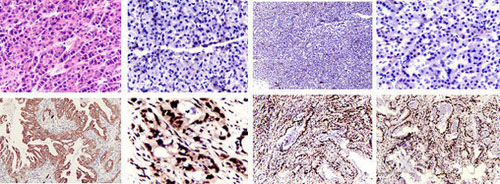
怎么做细胞爬片免疫组化染色实验
细胞爬片免疫组化染色,是通过细胞爬片是让玻片浸在细胞培养基内,细胞在玻片上生长,主要用于组织学,免疫组织化学...
2020/7/20 22:04:33
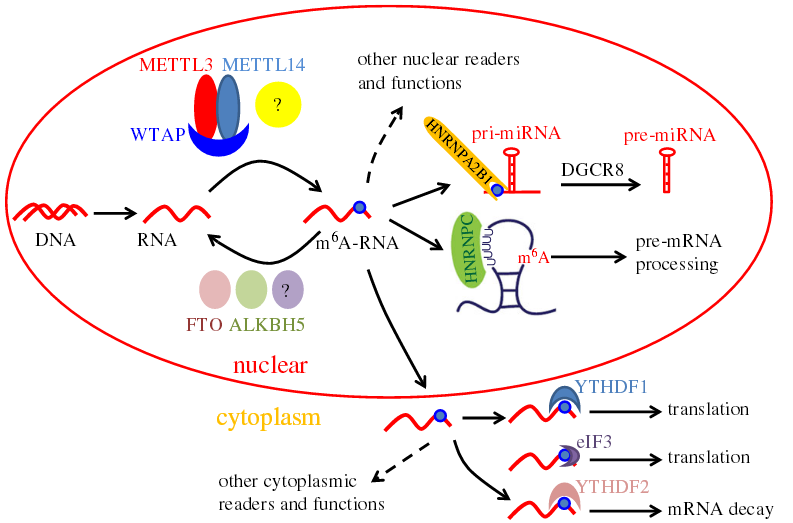
提取病毒RNA的实验方法
提取病毒RNA方法分别有:异硫氰酸胍的提取病毒RNA方法、TRIzol LS提取法、Trizol法提取法等等...
2020/7/22 20:29:26
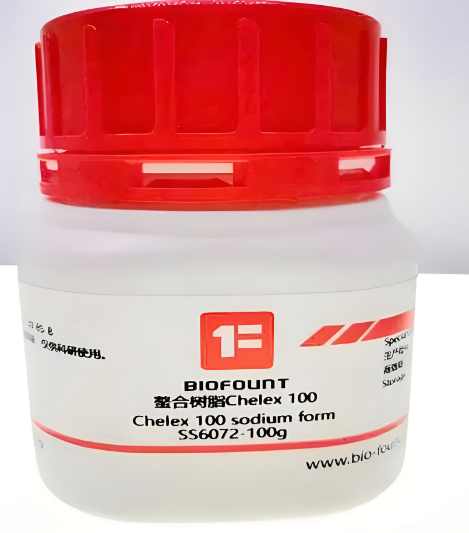
chelex 100树脂国产替代之路-BIOFOUNT范德生物
Chelex 100螯合离子交换树脂对铜、铁和其他重金属?的偏好显著高于对钠、钾等一价阳离子的偏好。它对二价...
2025/11/4 14:22:46
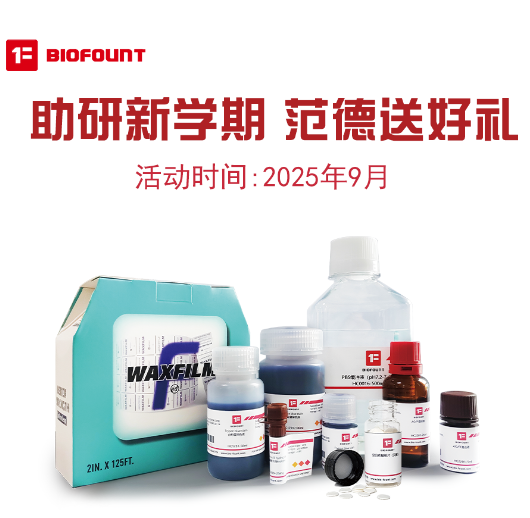
9月开学季——助研新学期 范德送好礼
2025/8/28 15:30:55

Waxfilm 实验室封口膜:技术与国际市场的双重突破
在实验室耗材领域,封口膜是保障实验准确性与稳定性的关键产品之一。近年来,Waxfilm?实验室封口膜凭借其卓...
2025/5/13 13:03:40
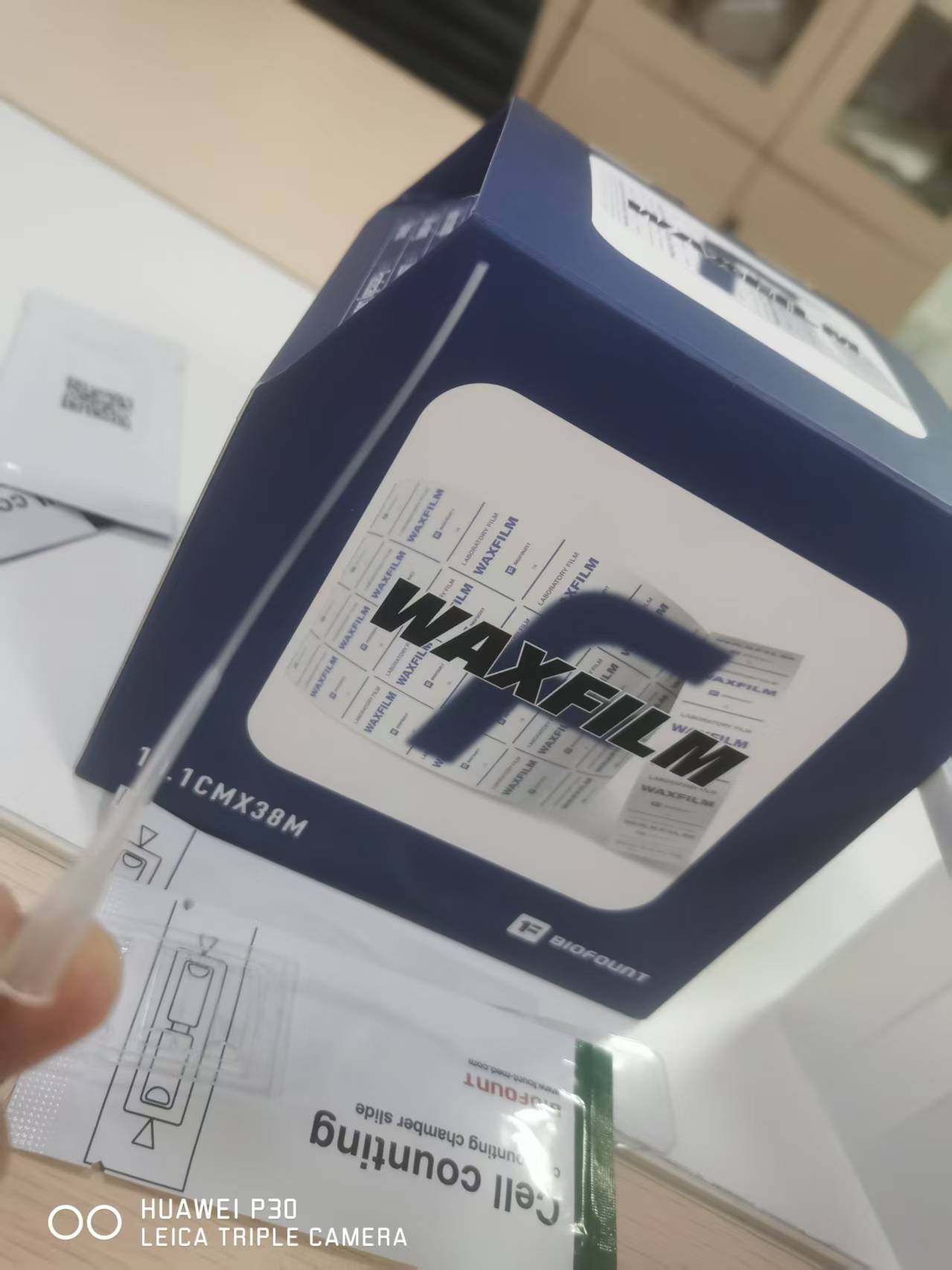
Waxfilm实验室封口膜的5大突破
Waxfilm实验室封口膜作为生物功能膜领域的国产技术突破和品牌突破,是生物领域中国技术发展的缩影。
2025/5/6 17:02:07
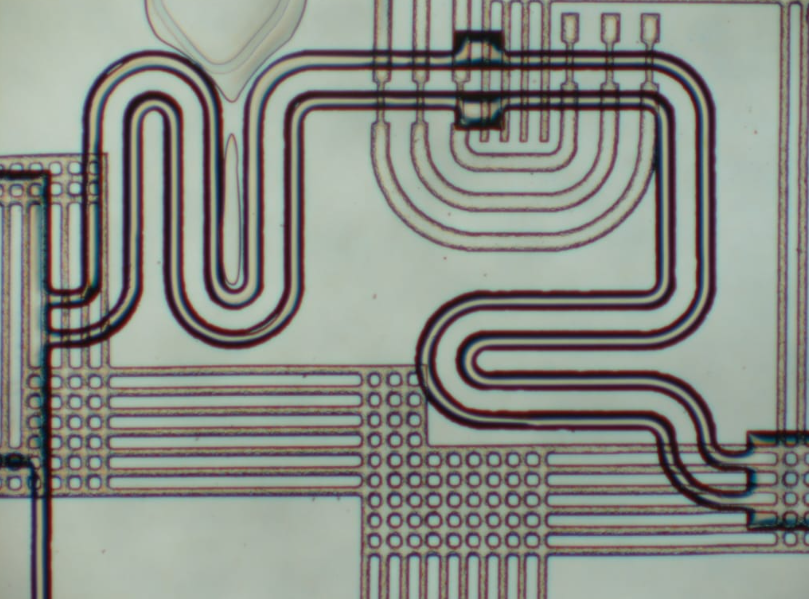
各种微流控芯片键合方法的优缺点
微流控芯片键合:目前主要有激光焊接、热压键合、胶键合、超音波焊接,每种方法都有各自的优缺点。本文主要介绍聚酯...
2023/7/28 10:43:09
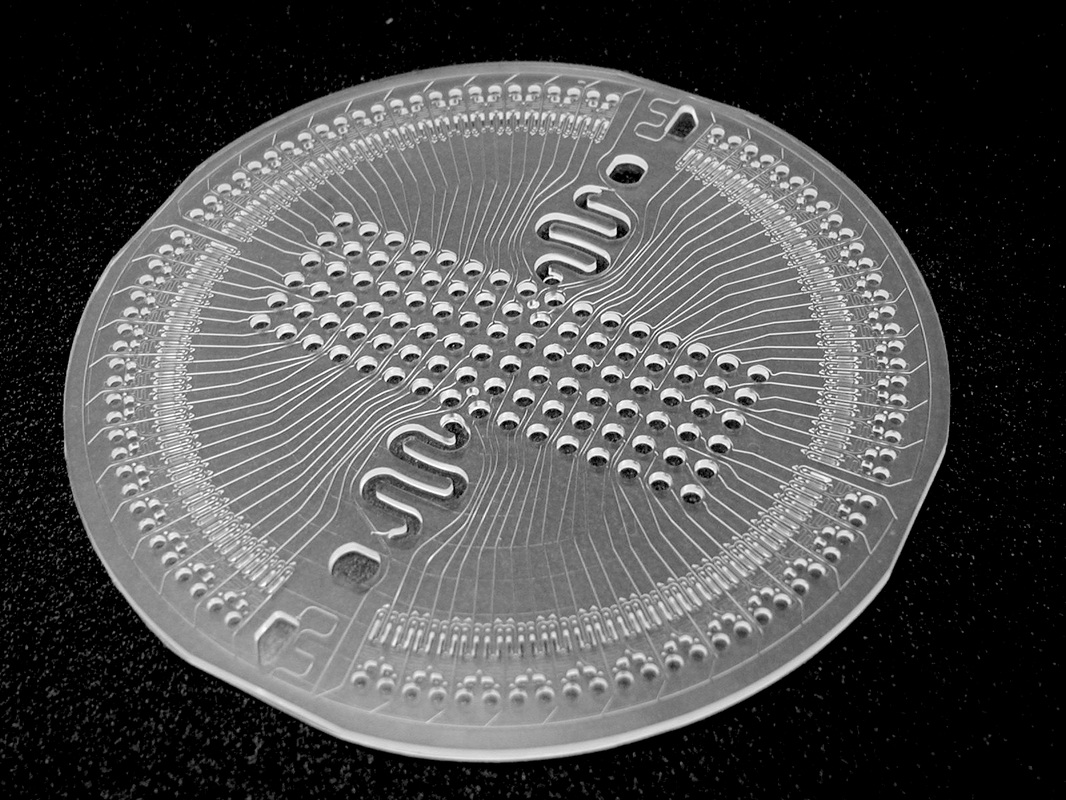
新一代微流控键合解决方案
微流控键合解决方案:微流控芯片制造的一个重要环节,也是最容易被忽视的--芯片键合。其中一个重要因素是:微流控...
2023/7/27 12:44:28
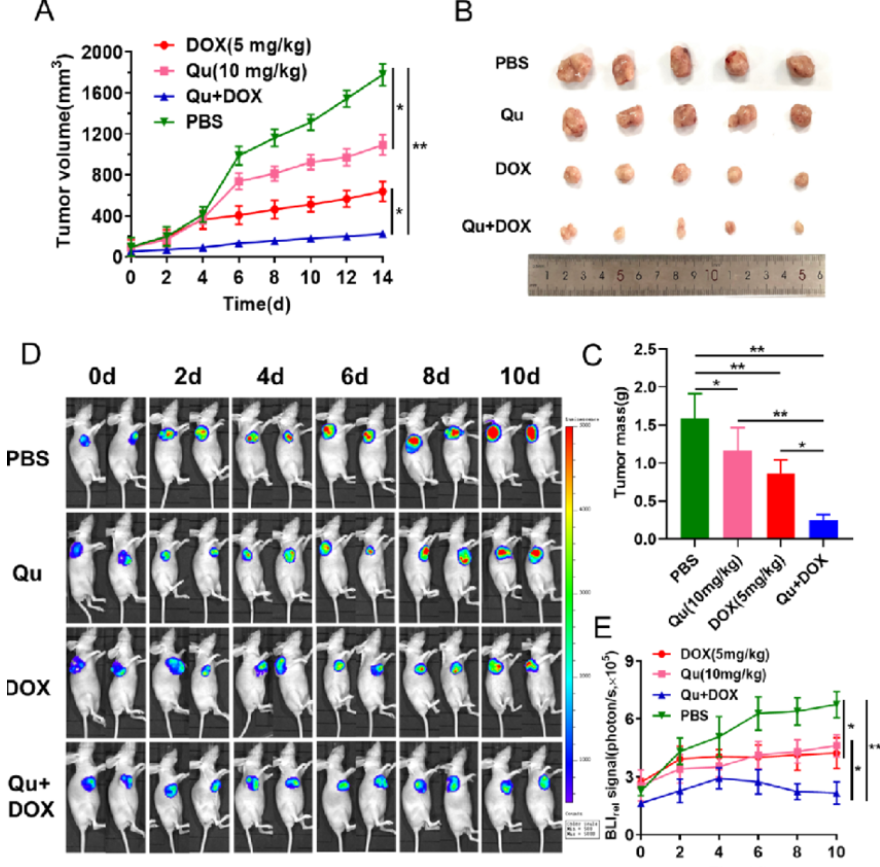
荧光素钾盐使用说明
D-荧光素钾盐(K+)设计用于体外和体内生物发光测定。D-荧光素的质量和纯度对于获得良好和可重复的结果至关重...
2023/7/20 11:05:11
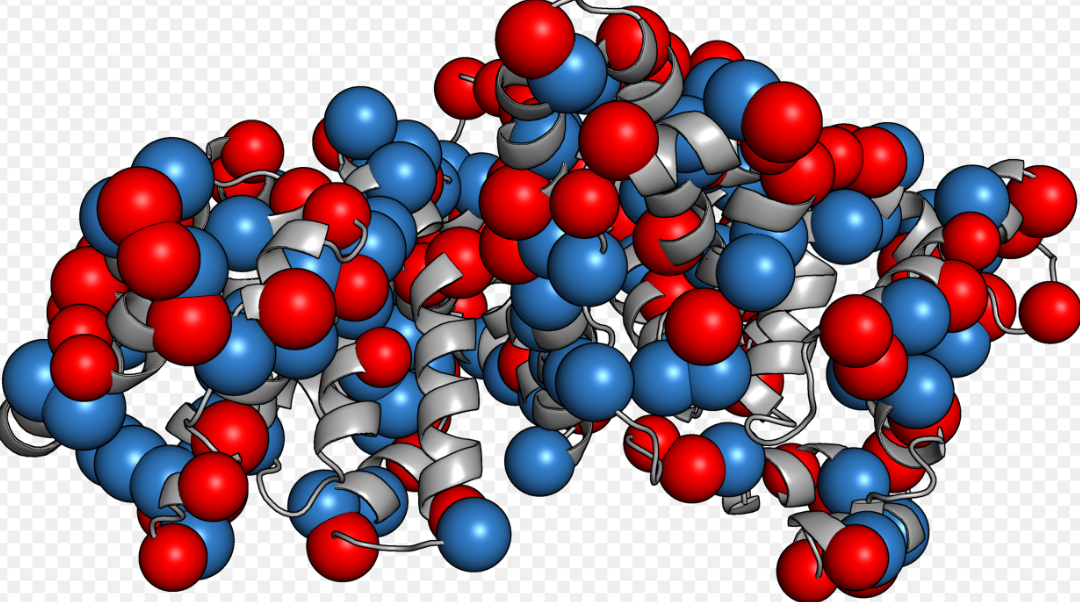
如何选BSA(牛血清白蛋白)
如何选BSA(牛血清白蛋白):牛血清白蛋白(BSA)有多种形式,如何选择适合自己的牛血清白蛋白(BSA)是一...
2023/2/14 13:09:18




 购物车
购物车 



